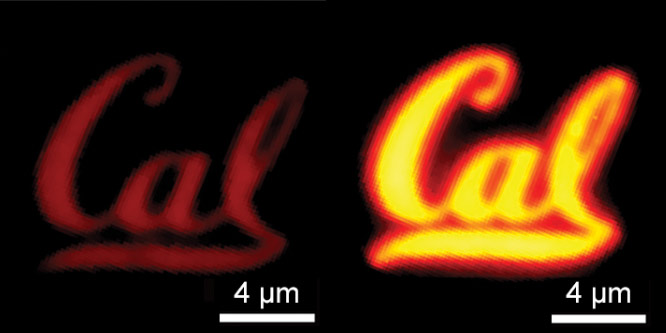
Making monolayers work
An emerging class of atomically thin materials known as monolayer semiconductors has generated a great deal of buzz in the world of materials science. Monolayers hold promise in the development of transparent LED displays, ultra-high efficiency solar cells, photo detectors and nanoscale transistors. Their downside? The films are notoriously riddled with defects, killing their performance. But Berkeley engineers have found a simple way to fix these defects by dipping molybdenum disulfine, or MoS2, into an organic superacid called bistriflimide, or TFSI. The treatment led to a dramatic 100-fold increase in the material’s photoluminescence quantum yield, a ratio describing the amount of light generated by the material versus the amount of energy put in — the greater the emission of light, the higher the quantum yield and the better the material quality. Their findings open the door to the practical application of monolayer materials in optoelectronic devices and high-performance transistors. Berkeley Engineering professors Ali Javey, Eli Yablonovitch and Xiang Zhang worked on the study with Ph.D. student Matin Amani, visiting Ph.D. student Der-Hsien Lien and postdoctoral fellow Daisuke Kiriya, as well as researchers from National Taiwan University, the University of Texas at Dallas and the U.S. Army Research Laboratory in Maryland.
Read more: Coming to a monitor near you: a defect-free, molecule-thick film

